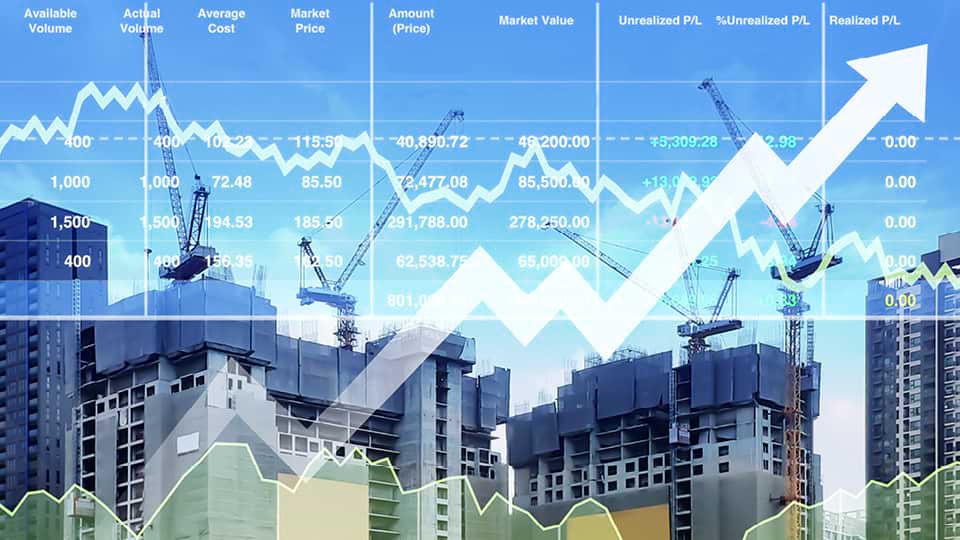Even with Covid, Muni Bonds Report Shows Defaults Remain Rare
August 31, 2021
Read Time 5 MIN
At the beginning of July, Moody’s Investors Service released its annual municipal bond market snapshot, US municipal bond defaults and recoveries, 1970-2020, with updates through 2020. In addition to emphasizing their resilience in the face of the COVID-19 (“Covid”) pandemic, the report continues to affirm two hallmark benefits offered by muni bonds. First, while they may have become more common over the last 10 years, municipal defaults and bankruptcies still remain rare overall. (Indeed, during the period of significant market stress during 2020 resulting from Covid, there were only two municipal defaults and neither were virus related.) Second, muni bonds continue to be highly rated compared to corporates. While there were municipal ratings downgrades during the year, global corporates’ ratings’ downgrades were more frequent.
Once again, an important “observation” noted in this year’s report was that over the 50-year study period: “[A]ny one default may only reflect the idiosyncrasies of that individual credit, and not be representative of a general sector trend.”
In relation to the pandemic, Moody’s notes that the muni market experienced a “very unique set of stresses stemming from the virus-related shutdowns, and [that] these have unleashed a series of new dynamics that will shape municipal finance going forward.” These include the “rapid acceleration” of remote learning and work and, associated with these, movement away from high-density employment and living.
Muni Bond Defaults and Bankruptcies Remain Rare
The report drew attention, once more, to the fundamental difference between municipal and corporate credits.
The five-year all-rated cumulative default rate (CDR) of municipal bonds throughout the study period (1970-2020) was unchanged at 0.08% and still remains very low. Likewise when compared to the five-year CDR of 6.89% for global corporates over the same time period. Of the two muni defaults in 2020, one was rated and the other was “by a Moody's rated entity albeit on an unrated instrument”.
Regarding the one Moody’s-rated default, triggered in early May by the Archdiocese of New Orleans’ bankruptcy, the report noted that the filing, apparently preemptive and defensive, illustrated a new trend, with other examples of such being actions by nearly 20% of all U.S. Catholic dioceses, the PG&E utility and the Boy Scouts of America.
Vis-à-vis Puerto Rico, Moody’s continued to note in its report: “Puerto Rico, although a US Territory, reinforces one pattern we have seen elsewhere, which is that a bankruptcy or bankruptcy-like proceeding may not only affect recoveries differently across separate debt classes but may also not impair all debt classes to begin with.” In other words, these proceedings may affect debt classes differently with differing levels of severity.
Ratings Stability Despite the Coronavirus Crisis
In the two years prior to the pandemic, credit quality stabilization in the municipal bond sector had been helped by growth and economic recovery in many regions of the U.S. However, despite growth having been clobbered by Covid in 2020, and the stresses resulting from the virus, not only were there fewer rating changes during the year than in prior years, but rating volatility also actually fell. In addition, “rating downgrades essentially equaled rating upgrades.”
Municipal credits remain strong and, according to the report, “their rating distribution is substantially skewed toward the investment-grade, where ratings tend to be more stable.”
The report added that the municipal sector overall remains highly rated, with approximately 91% of all the municipal credits Moody’s rates falling into the A category or higher as of the end of 2020 (2019: ≈92%). Further, at the end of 2020, the median rating for U.S. municipal credits had fallen only to Aa3 (2019: Aa2). This still stood in stark contrast to the median rating for global corporates, which was Baa3 (2019: Baa2).
Conclusion
We continue to argue that, while it remains a struggle to obtain the same amount of timely disclosure from issuers of municipal bonds as one sees in other asset classes, we believe the pure empirical evidence suggests that muni bonds still offer a fiscally sound vehicle for deriving an income stream free from federal, and in some cases, state taxes. We believe one need only look at the muni market’s behavior during the Covid crisis in 2020 for prima facie evidence of both its (and muni bonds’) “soundness” and resilience.
If one looks at long-term municipal bond obligations, across all sectors, between 1970 and 2020, according to the Moody’s report, there were only 114 distinct Moody’s-rated defaults, representing a little over $72 billion, out of a universe of more than 50,000 different state and local governments and other issuing authorities. There remain, however, as always, caveats. As Moody’s, once again, states in the report’s Introduction: “The once-comfortable aphorism that ‘munis do not default’ is no longer credible: rating volatility, rating transition rates and cumulative default rates (CDRs) have all increased since 2010.” However, even when subject to virus-related stresses, they have remained surprisingly stable—so far.
Challenges facing this sector include demographic shifts (populations both aging and relocating—affecting tax receipts), “substantial increases in pension and retirement health care leverage” and “the associated heightened exposures to equity markets.” In addition to these challenges, it remains to be seen what the full effects may turn out to be from the new dynamics that became only too apparent with the arrival of, and devastation wrought by, Covid.
Despite this, we still believe that municipal bonds remain important to the core strategy of constructing an individual portfolio.
Learn more about VanEck’s suite of municipal bond ETFs.
Related Insights
April 02, 2024
February 21, 2024
February 02, 2024
IMPORTANT DISCLOSURES
Source: Moody’s Investors Service: US municipal bond defaults and recoveries, 1970-2020
Please note that VanEck may offer investments products that invest in the asset class(es) or industries included in this commentary.
This is not an offer to buy or sell, or a recommendation to buy or sell any of the securities/financial instruments mentioned herein. The information presented does not involve the rendering of personalized investment, financial, legal, or tax advice. Certain statements contained herein may constitute projections, forecasts and other forward looking statements, which do not reflect actual results, are valid as of the date of this communication and subject to change without notice. Information provided by third party sources are believed to be reliable and have not been independently verified for accuracy or completeness and cannot be guaranteed. VanEck does not guarantee the accuracy of third party data. The information herein represents the opinion of the author(s), but not necessarily those of VanEck.
The principal risks of investing in VanEck Vectors ETFs include sector, market, economic, political, foreign currency, world event, index tracking and non-diversification risks, as well as fluctuations in net asset value and the risks associated with investing in less developed capital markets. The Funds may loan their securities, which may subject them to additional credit and counterparty risk. ETFs that invest in high-yield securities are subject to subject to risks associated with investing in high-yield securities; which include a greater risk of loss of income and principal than funds holding higher-rated securities; concentration risk; credit risk; hedging risk; interest rate risk; and short sale risk. ETFs that invest in companies with small capitalizations are subject to elevated risks, which include, among others, greater volatility, lower trading volume and less liquidity than larger companies. Please see the prospectus of each Fund for more complete information regarding each Fund's specific risks.
Investing involves substantial risk and high volatility, including possible loss of principal. An investor should consider the investment objective, risks, charges and expenses of a Fund carefully before investing. To obtain a prospectus and summary prospectus, which contain this and other information, call 800.826.2333 or visit vaneck/etf.com. Please read the prospectus and summary prospectus carefully before investing.
Related Funds
IMPORTANT DISCLOSURES
Source: Moody’s Investors Service: US municipal bond defaults and recoveries, 1970-2020
Please note that VanEck may offer investments products that invest in the asset class(es) or industries included in this commentary.
This is not an offer to buy or sell, or a recommendation to buy or sell any of the securities/financial instruments mentioned herein. The information presented does not involve the rendering of personalized investment, financial, legal, or tax advice. Certain statements contained herein may constitute projections, forecasts and other forward looking statements, which do not reflect actual results, are valid as of the date of this communication and subject to change without notice. Information provided by third party sources are believed to be reliable and have not been independently verified for accuracy or completeness and cannot be guaranteed. VanEck does not guarantee the accuracy of third party data. The information herein represents the opinion of the author(s), but not necessarily those of VanEck.
The principal risks of investing in VanEck Vectors ETFs include sector, market, economic, political, foreign currency, world event, index tracking and non-diversification risks, as well as fluctuations in net asset value and the risks associated with investing in less developed capital markets. The Funds may loan their securities, which may subject them to additional credit and counterparty risk. ETFs that invest in high-yield securities are subject to subject to risks associated with investing in high-yield securities; which include a greater risk of loss of income and principal than funds holding higher-rated securities; concentration risk; credit risk; hedging risk; interest rate risk; and short sale risk. ETFs that invest in companies with small capitalizations are subject to elevated risks, which include, among others, greater volatility, lower trading volume and less liquidity than larger companies. Please see the prospectus of each Fund for more complete information regarding each Fund's specific risks.
Investing involves substantial risk and high volatility, including possible loss of principal. An investor should consider the investment objective, risks, charges and expenses of a Fund carefully before investing. To obtain a prospectus and summary prospectus, which contain this and other information, call 800.826.2333 or visit vaneck/etf.com. Please read the prospectus and summary prospectus carefully before investing.

